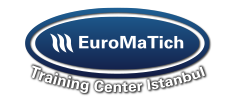Overview:
Introduction
Human resources management is the management of the workforce of organizations or human resources, and it specializes in attracting employees, selecting, training, evaluating and rewarding employees, as well as following up the organization’s leadership and organizational culture and ensuring compliance with labor laws, in cases where employees are willing to conduct collective negotiations, human resources management is Her role is primary communication with employee representatives.
Human resources are the sum of the individuals who make up the workforce of an organization, business sector, or economy. Some use the term human capital synonymously with human resources, although human capital usually refers to a narrower point of view. Other terms that are sometimes used include « workforce” or talents or “work” or just “individuals”.
Human resources existed as a product of the human relations movement in the early twentieth century when researchers began documenting ways to create business values through strategic management of the workforce. and advanced research, Human Resources now focuses on strategic initiatives such as mergers and acquisitions, talent management, succession plans, industrial or labor relations, and diversity and inclusion.
Course Objectives
At the end of this course, the participants will be able to:
- Develop the skills of a human resources specialist.
- Get Knowledge of the nature of human resources as an administrative function.
- Be Familiar with the scientific and practical methods in managing (HR) human resources.
- Identify all human resources functions and responsibilities and determine their contributions to the success of the organization.
- Know the relationship of human resource management (HR) to create a comfortable work environment with job security and good relationships.
- Practice the four new roles that make the human resources department a reliable business partner in modern organizations.
- Evaluate the effectiveness of HR functions through the use of smart KPIs.
- List the functions and responsibilities of human resources and identify their contributions to the success of the organization.
- Understand how to increase the efficiency of human resource work through competency frameworks.
- Acquire the key competencies of a human resource specialist.
Targeted Audience
- Human resources department managers and specialists in this department.
- Human resources specialist.
- Anyone who finds themselves in need of this workshop and wants to develop their skills and experience.
Course Outline
Unit 1: Human Resource Management:
- Definition and objectives of modern human resource management.
- Human resource management between the past and the present.
- Organization.
- Saving resources.
- climate and culture.
- training and development.
- Performance Management.
- Compensation management systems.
- Department of Human Resources.
- Competency-based human resource management.
Unit 2: Human resources as a business partner:
- Strategic human resource management.
- Enterprise infrastructure management.
- Manage employee contributions.
- Transformation and change management.
- The core HR competencies needed to perform the four roles.
- The basic framework for emotional intelligence.
- The emotional intelligence of the business partner of an HR professional.
Unit 3: Job Analysis, Description, and Evaluation:
- Widespread job description.
- The four methodologies for conducting job analysis.
- Job Key Result Areas (KRAs).
- Using the job key result areas methodology in writing the job description.
- Characteristics of an effective job description.
- Ensure “internal consistency” through job evaluation.
Unit 4: Fundamentals of strategic management of human resources:
- Environment analysis.
- From the SWOT analysis “Strengths, Weaknesses, Opportunities and Threats” to the corporate vision and mission.
- The relationship between strategy and performance.
- HR Key Result Areas vs. Organization Key Result Areas (KRAs).
- Measuring key results areas for human resources through key performance indicators (KPIs) and SMART.
- Convert KPIs into SMART goals.
- Balanced Scorecard.
Unit 5: Compatibility between jobs and employees:
- Find out how to match jobs and employees.
- Know how to preserve your human resources?
- Human resources whose job?
- How do you write a job description?
Unit 6: Your human resource needs:
- How do you determine your human resource needs?
- How do you set an estimated budget for human resources?
- How do you deal with supply and demand, deficit and surplus?
- Cost and benefit of human resource planning?
- Are you hiring on sound grounds?
Unit 7: Choosing:
- How do you choose?
- Are the tests and selection procedures based on sound scientific foundations?
- Are wages commensurate with qualifications and level of performance?
- Do your wages fit Maslow’s hierarchy?
Unit 8: Incentives, benefits, and services:
- Why do you offer incentives, benefits, and services to employees?
- What are the foundations for its submission, and the stages of its design?
- How do you perform staff, what are the optimal measurement methods?
- How do you develop a plan to improve their performance?
- How do you train and develop them?
Unit 9: Competency-Based Human Resource Management:
- Definition of efficiency.
- Types of competencies.
- Different components of efficiency.
- Competency-based recruitment and selection processes.
- Competency-based training and development processes.
- Competency-based performance management process.
- Benefits from human resources that are based on competency.
Unit 10: Human Resources Performance Measurement:
- The dominance of business results over human resources results.
- The five steps to perform the analyses.
- Polarization measurement and selection.
- Measurement of compensation and benefits.
- Measurement of training and development.
- Measure performance management.
- Designing a balanced scorecard for human resources.


